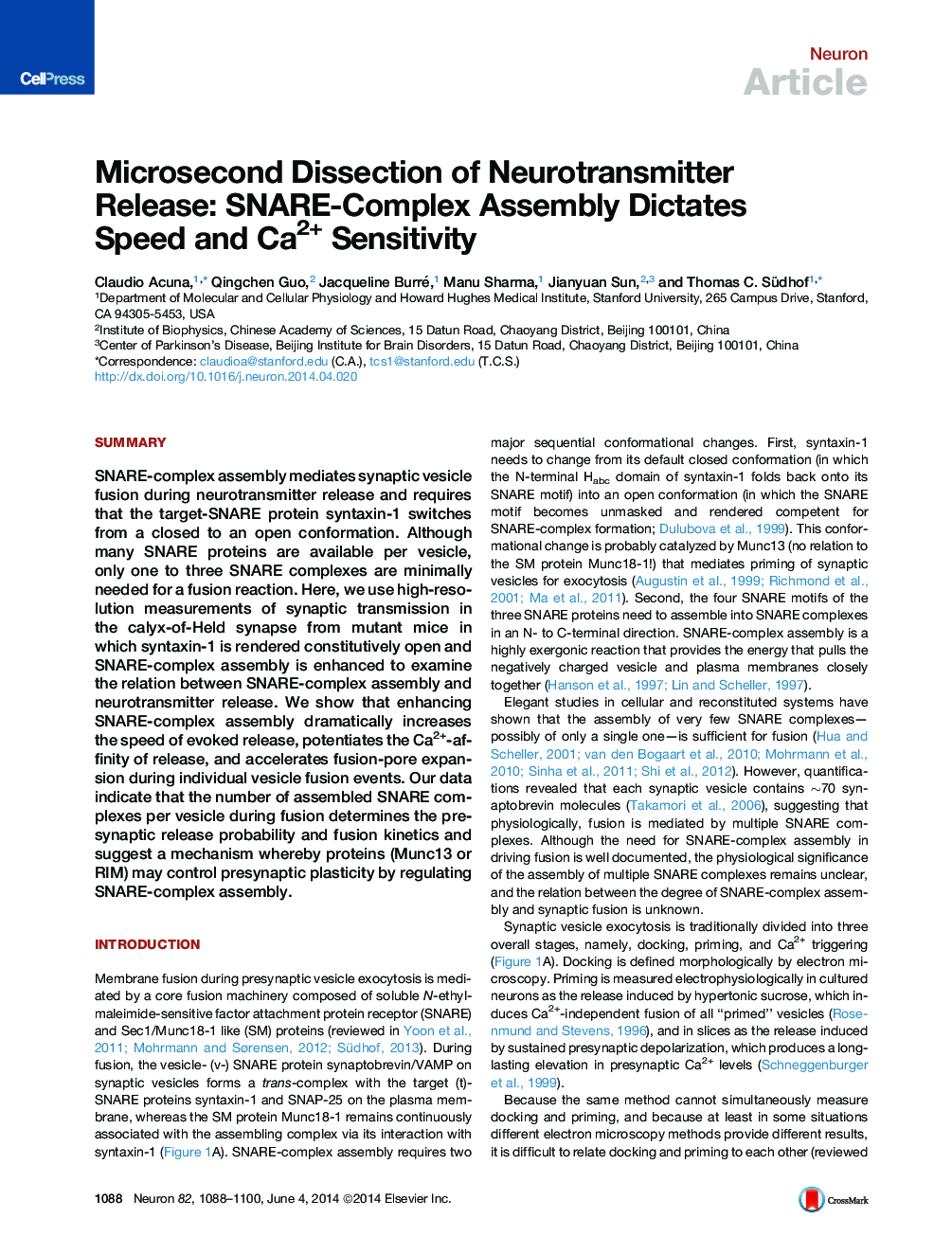| Article ID | Journal | Published Year | Pages | File Type |
|---|---|---|---|---|
| 4321060 | Neuron | 2014 | 13 Pages |
•Constitutively opening syntaxin-1 accelerates SNARE-complex assembly•Opening syntaxin-1 increases the apparent Ca2+ affinity of release ∼2-fold•Constitutively opening syntaxin-1 accelerates release in calyx-of-Held synapses•Opening syntaxin-1 accelerates fusion-pore opening rates of individual vesicles
SummarySNARE-complex assembly mediates synaptic vesicle fusion during neurotransmitter release and requires that the target-SNARE protein syntaxin-1 switches from a closed to an open conformation. Although many SNARE proteins are available per vesicle, only one to three SNARE complexes are minimally needed for a fusion reaction. Here, we use high-resolution measurements of synaptic transmission in the calyx-of-Held synapse from mutant mice in which syntaxin-1 is rendered constitutively open and SNARE-complex assembly is enhanced to examine the relation between SNARE-complex assembly and neurotransmitter release. We show that enhancing SNARE-complex assembly dramatically increases the speed of evoked release, potentiates the Ca2+-affinity of release, and accelerates fusion-pore expansion during individual vesicle fusion events. Our data indicate that the number of assembled SNARE complexes per vesicle during fusion determines the presynaptic release probability and fusion kinetics and suggest a mechanism whereby proteins (Munc13 or RIM) may control presynaptic plasticity by regulating SNARE-complex assembly.
